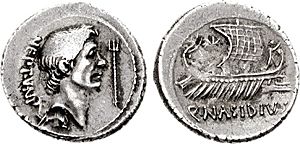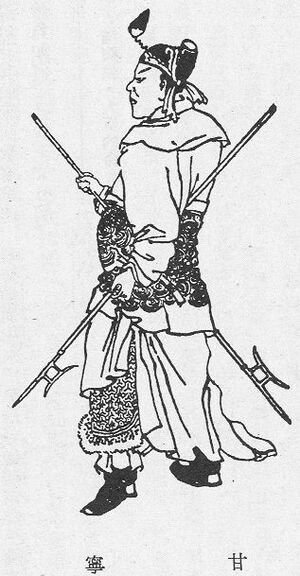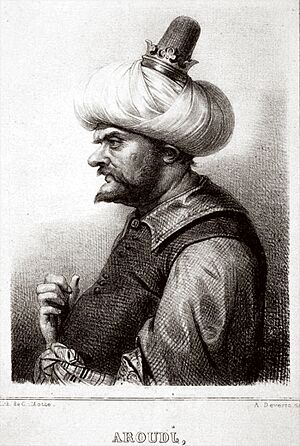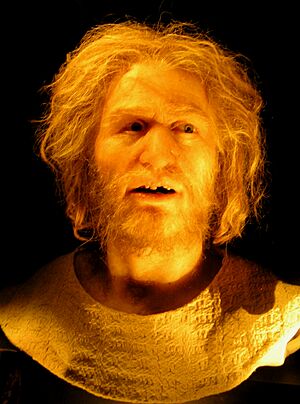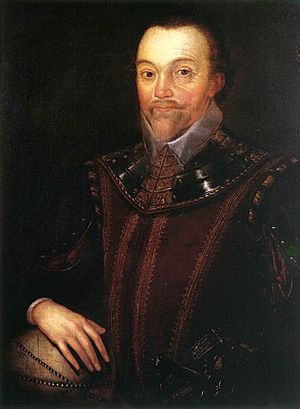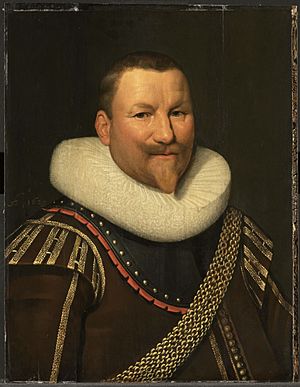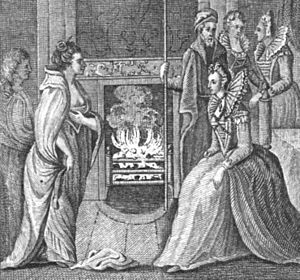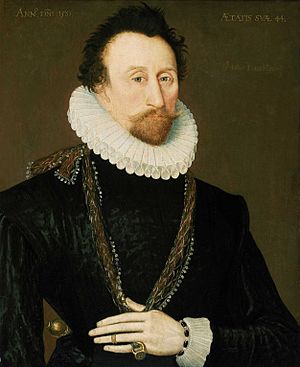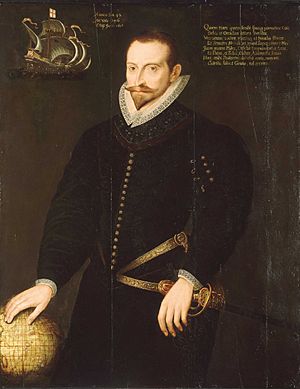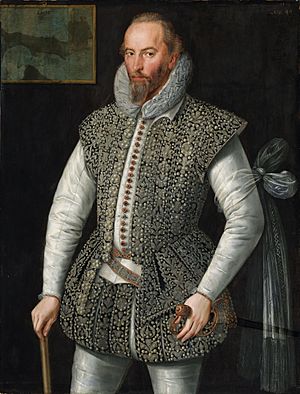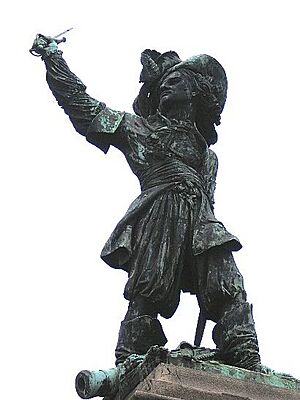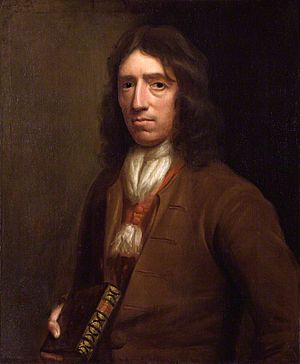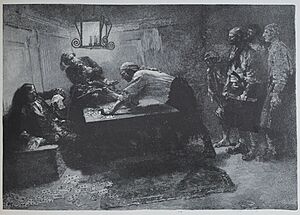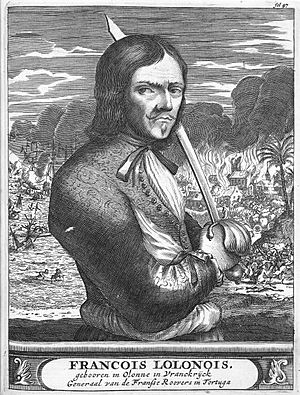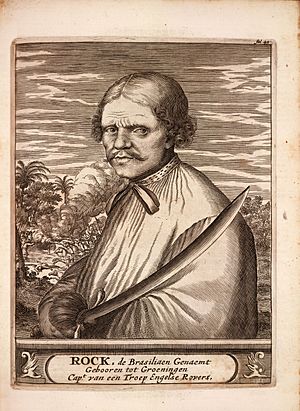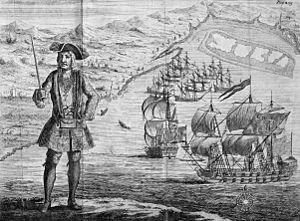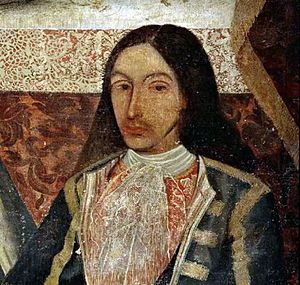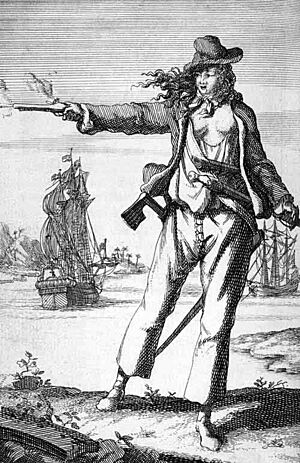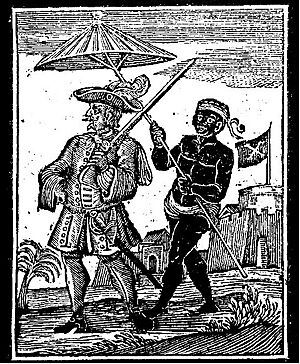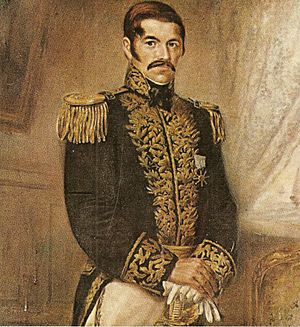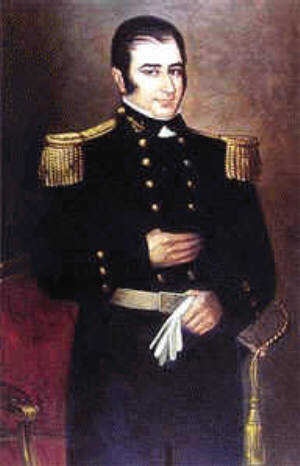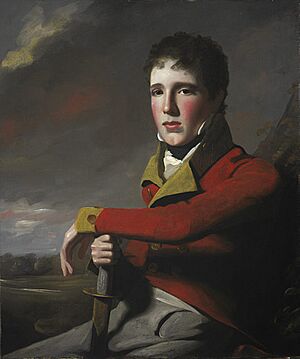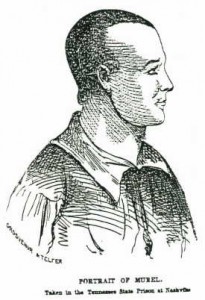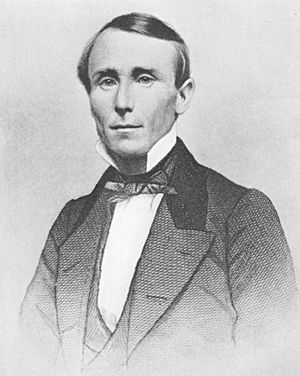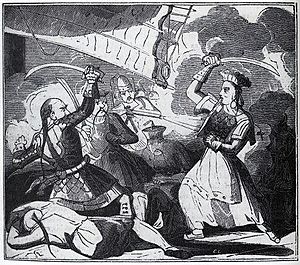List of pirates facts for kids
This article lists famous pirates, buccaneers, corsairs, privateers, and river pirates. It includes both captains and important crew members. For a list of female pirates, see women in piracy.
Contents
- Ancient World: 315 BC–197 AD
- Middle Ages: 400–1585
- Rise of the English Sea Dogs and Dutch Corsairs: 1560–1650
- Age of the Buccaneers: 1650–1690
- Golden Age of Piracy: 1690–1730
- Post Golden Age: pirates, privateers, smugglers, and river pirates: 1730–1885
- Renegades of the West Indies: 1820–1830
- Piracy in East and Southeast Asia: 1400–1860
- Piracy from the 20th–21st century: 1901–
Ancient World: 315 BC–197 AD
Piracy has existed for thousands of years. Even in ancient times, people sailed the seas and rivers to attack other ships and towns. These early pirates often caused big problems for empires and traders.
- Gan Ning (active 190–197 CE) was a Chinese military general. Before that, he was a famous pirate and raider. His group used to carry bells to scare people.
- Sextus Pompeius (67–35 BC) was a Roman general. He was also a pirate who fought against the powerful Second Triumvirate of Rome.
- Teuta of Illyria (active 231–227 BC) was a queen who supported pirates among her people. She even had a Roman diplomat killed by them.
- Dionysius the Phocaean (active 494 BC) was a Greek admiral. He attacked merchants from Carthage and Tyrrhenia after the Greco–Persian Wars.
Middle Ages: 400–1585
During the Middle Ages, pirates continued to roam the seas. They often targeted trade routes and coastal towns. Some were privateers, meaning they had permission from a government to attack enemy ships.
- Aruj Reis (1474–1518) was an Ottoman privateer. He was also known as Barbarossa, or Redbeard. He became a governor in Algiers.
- Awilda (5th century) was a legendary pirate from Scandinavia. She and her female friends dressed as sailors and took over a ship.
- Klaus Störtebeker (1360–1401) was a German pirate. He was one of the leaders of the Likedeelers, a group of former Victual Brothers.
- Yermak Timofeyevich (circa 1532–1585) was a Russian Cossack river pirate. He led an expedition that started the Russian conquest of Siberia.
- Jeanne de Clisson (1300–1359) was a French-Breton pirate. She raided French towns and ships in the English Channel.
- Pier Gerlofs Donia (circa 1480–1520) was a Frisian warrior and folk hero. He was known as Grutte Pier, or "big Pier," because of his height.
Rise of the English Sea Dogs and Dutch Corsairs: 1560–1650
This period saw the rise of powerful English and Dutch sailors. They often acted as privateers, attacking the ships and colonies of rival nations, especially Spain. These "Sea Dogs" and "Corsairs" played a big role in naval history.
- Sir Francis Drake (1540–1596) was an English corsair. He was known as "el Draque" (the Dragon) by the Spanish. He raided Spanish merchant ships for Queen Elizabeth I.
- Thomas Cavendish (1560–1592) was the first person to intentionally sail around the world. He also raided many Spanish towns and ships.
- Piet Pieterszoon Hein (1577–1629) was a Dutch privateer. After being a Spanish galley slave, he captured a massive amount of cargo from the Spanish treasure fleet.
- Gráinne O'Malley (1530–1603) was an Irish chieftain and pirate queen. She is a very important figure in Irish legend.
- Sir John Hawkins (1532–1595) was an English corsair. He was active off the coasts of West Africa and Venezuela. His ship designs were important against the Spanish Armada.
- Sir Francis Verney (1584–1615) was an English nobleman. He became one of the most feared Barbary corsairs in the early 17th century.
- John Ward (1552–1622) was a famous English pirate. He later became a Barbary corsair operating from Tunis.
- Jan Janszoon (1570–after 1641) was originally Dutch. He converted to Islam and became a famous "Salé Rover" in Morocco.
- Cornelius Jol (1597–1641) was a Dutch corsair. He was successful against the Spanish and was one of the first to use a wooden peg leg.
Age of the Buccaneers: 1650–1690
The Buccaneers were a group of privateers and pirates. They mostly operated in the Caribbean Sea, attacking Spanish ships and settlements. Many were French, Dutch, or English.
- Sir Henry Morgan (1635–1688) was a Welsh privateer. He later became Lieutenant Governor of Jamaica. He raided Panama, Maracaibo, Gibraltar, and Porto Bello.
- François l'Olonnais (1635–1668) was a French buccaneer. He was nicknamed "The Bane of Spaniards" because of his brutality. He raided Maracaibo and Gibraltar.
- William Dampier (1651–1715) was an English buccaneer and explorer. He was the first person to sail around the world three times. He also explored parts of Australia.
- Jean Bart (1651–1702) was a French privateer. He was born a fisherman's son but retired as an admiral in the French navy.
- Laurens de Graaf (1653–1704) was a Dutch pirate and mercenary. He was known as "a great and mischievous pirate" by Henry Morgan. He sacked Veracruz with Nicholas van Hoorn.
- Michel de Grammont (1645–1686) was a French buccaneer. He mainly attacked Spanish areas like Maracaibo and Veracruz.
- Roche Braziliano (circa 1630–1671?) was a Dutch-Brazilian pirate. He was known for his fury and cruelty, especially towards Spaniards.
- Pierre le Grand (17th century) was a French buccaneer. He is known for a single attack on a Spanish galleon, though his existence is debated.
Golden Age of Piracy: 1690–1730
This was a very famous time for pirates, especially in the Caribbean and Indian Ocean. Many of the pirates we imagine today come from this era.
- Bartholomew Roberts (1682–1722), known as Black Bart, was a Welsh pirate. He was the most successful pirate of this era, capturing over 470 ships.
- Blackbeard (Edward Teach, circa 1680–1718) was an English pirate. His scary appearance helped create the classic pirate image. He became famous after taking command of the Queen Anne's Revenge.
- Henry Every (1659–1699) was an English pirate. He is famous for being one of the few pirates who retired wealthy without being caught or killed.
- William Kidd (1645–1701) was a Scottish privateer turned pirate. The rumor of his buried treasure has made him a legend.
- Anne Bonny (1698–1782) was an Irish pirate. She is remembered as one of the few known female pirates, even though she never commanded her own ship.
- Mary Read (1690–1721) was an English pirate. Along with Anne Bonny, she is one of the few known female pirates.
- Samuel Bellamy (1689–1717), known as Black Sam, was an English pirate. He had a short but very successful career, capturing over 50 ships. His ship, the Whydah Galley, is the only fully confirmed Golden Age pirate shipwreck found.
- Stede Bonnet (1688–1718) was known as "The Gentleman Pirate." He came from a wealthy family in Barbados before becoming a pirate.
- Charles Vane (1680–1721) was an English pirate. He was disliked for his cruelty and often cheated his crew out of their shares.
- Edward Low (1690–1724) was an English pirate known for his extreme cruelty.
- Olivier Levasseur (1688–1730), known as "la Buse" (the Buzzard), was a French pirate. He left a mysterious message that people are still trying to solve today.
- Amaro Pargo (1678–1695) was a Spanish privateer. He was one of the most important figures in 18th-century Spain.
- Thomas Tew (died 1695) was an English pirate. He pioneered a route known as the "Pirate Round" for long-distance piracy.
- Richard Worley (died 1719) was an English pirate. He is credited as one of the first to fly the skull and crossbones pirate flag, the Jolly Roger.
- Emanuel Wynn (early 18th century) was a French pirate. He was the first pirate to fly the "skull and crossbones" Jolly Roger flag. His flag also included an hourglass.
Post Golden Age: pirates, privateers, smugglers, and river pirates: 1730–1885
After the Golden Age, traditional piracy became less common. However, privateers still operated, and new types of pirates emerged, like river pirates and smugglers.
- Jean Lafitte (circa 1776–1826?) was a French pirate or privateer. He was active in the Gulf of Mexico. He famously helped Andrew Jackson in the Battle of New Orleans during the War of 1812.
- Hippolyte Bouchard (1780–1837) was a French and Argentine sailor. He fought for Argentina, Chile, and Peru.
- Luis Brion (1782–1821) was a Dutch privateer. He served the Republics of Venezuela and Great Colombia, fighting for independence.
- John A. Murrell (circa 1806–1844) was a legendary bandit. Known as the "Great Western Land Pirate," he led a gang of river pirates and highwaymen along the Mississippi River.
- James Ford (circa 1770–1833) was a civic leader in Kentucky and Illinois. Secretly, he led a gang of river pirates and highwaymen along the Ohio River.
- Rachel Wall (1760–1789) was a female pirate active off the New Hampshire coast. She was executed in Boston.
- Gregor MacGregor (1786–1845) was a Scottish adventurer. He fought for Venezuelan independence and later invented a fictional country called Poyais to trick investors.
Renegades of the West Indies: 1820–1830
This short period saw a final burst of piracy in the Caribbean. These pirates were often hunted down by new anti-piracy forces.
- Roberto Cofresí (1791–1825) was from Puerto Rico. He is considered the "last of the successful West India pirates." He avoided capture by many navies for years.
- Charles Gibbs (1798–1831) was one of the last pirates active in the Caribbean. He was also one of the last people executed for piracy by the United States.
- Pedro Gilbert (1800–1834) took part in the last recorded act of piracy in the Atlantic Ocean.
Piracy in East and Southeast Asia: 1400–1860
Piracy was also a big problem in East and Southeast Asia for centuries. Powerful pirate fleets controlled vast areas of the sea, impacting trade and local governments.
- Ching Shih (died 1844) was a very famous female pirate in China. She commanded a huge fleet of over 1,500 ships and 80,000 sailors. She controlled much of the South China Sea. She was able to retire peacefully after the government offered her a pardon.
- Cheung Po Tsai (early 19th century) was active along the Guangdong coast of China. He is said to have commanded a fleet of 600 ships.
- Chui A-poo (died 1851?) was a powerful Chinese pirate. He preyed on merchant ships until his fleet was defeated by the Royal Navy.
- Wang Zhi (died 1560) was a Chinese smuggler who became a pirate leader. He raided areas from Japan to Thailand.
Piracy from the 20th–21st century: 1901–
Piracy still exists today, though it looks different from the past. Modern pirates often target large cargo ships for ransom.
- Felix von Luckner (1881–1966) was a German navy officer. He was known as "the Sea-Devil" for his actions during World War I. He commanded a sailing ship that raided enemy commerce.
- Henrique Galvão (1895–1970) was a Portuguese revolutionary. In 1961, he led the hijacking of the ship Santa Maria. He used the hijacking to protest against the government.
- Abduwali Muse (born 1990) is a Somali pirate. In 2011, he was part of the first piracy trial in the United States in almost two centuries.
- Asad 'Booyah' Abdulahi (born 1966) is a Somali pirate boss. He is active in capturing ships in the Gulf of Aden for ransoms.
- "Roaring" Dan Seavey (1865–1949) was an American "Timber Pirate" and "Lake Pirate." He operated on the Great Lakes in Wisconsin and Michigan.
|


